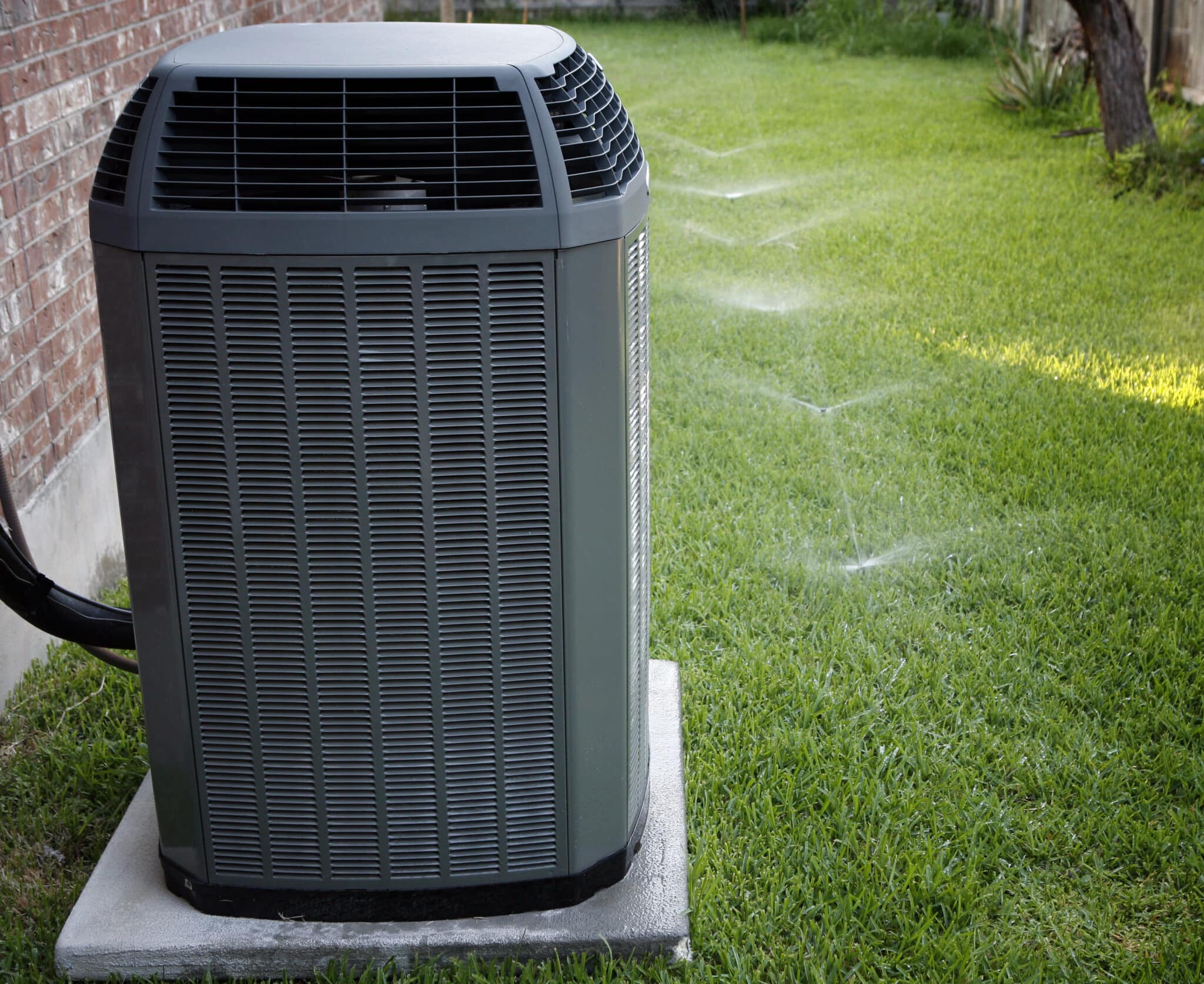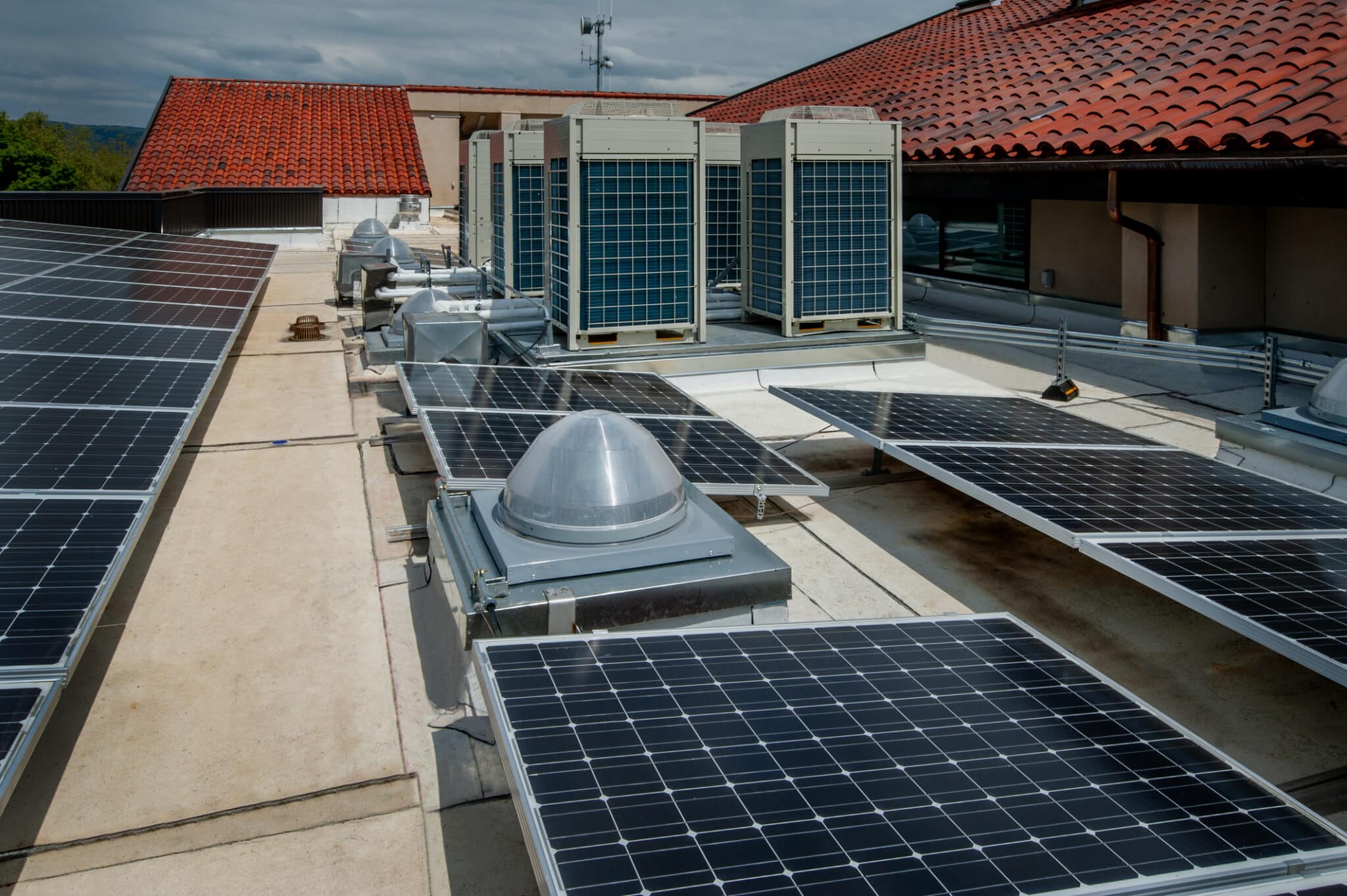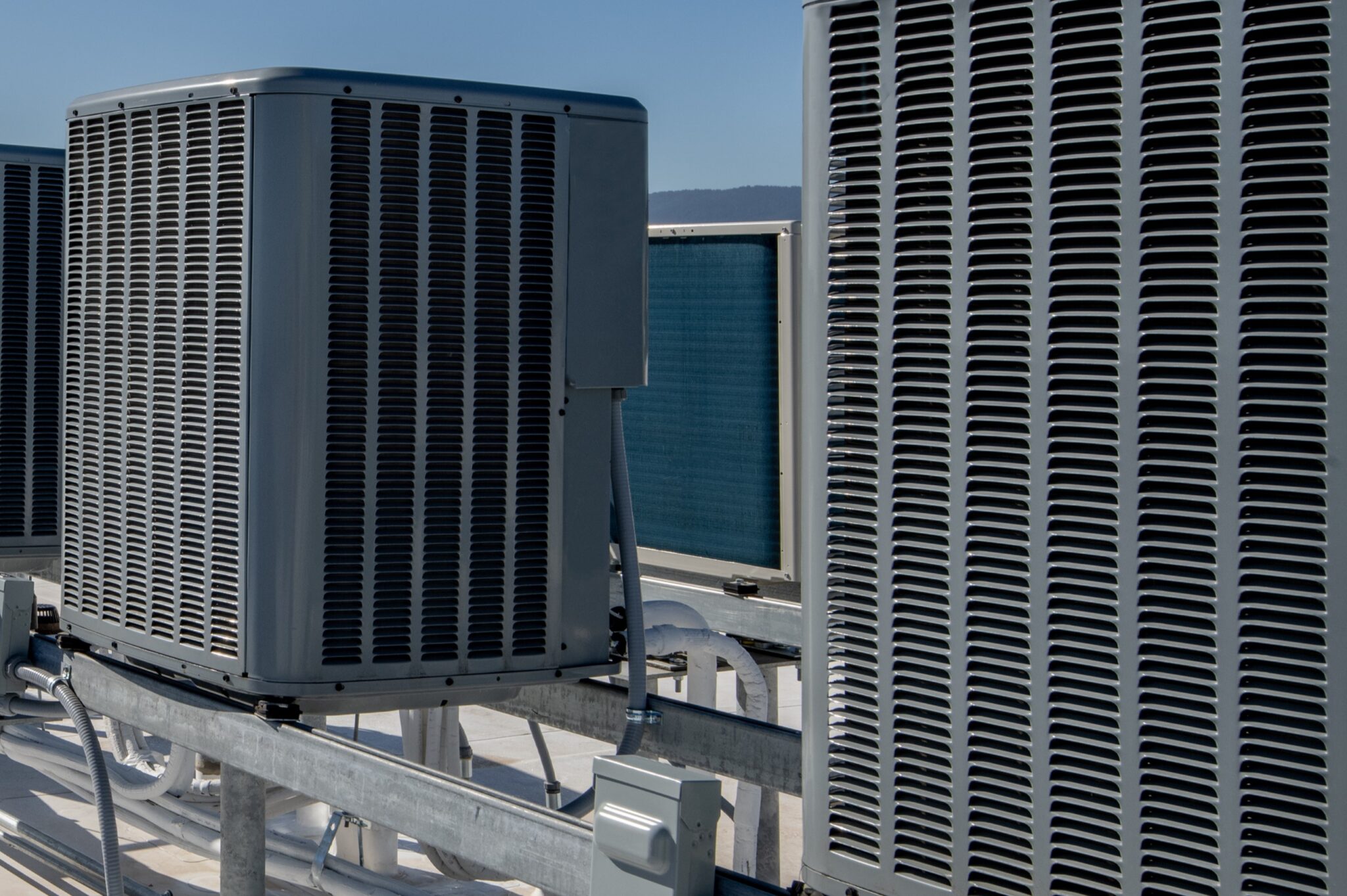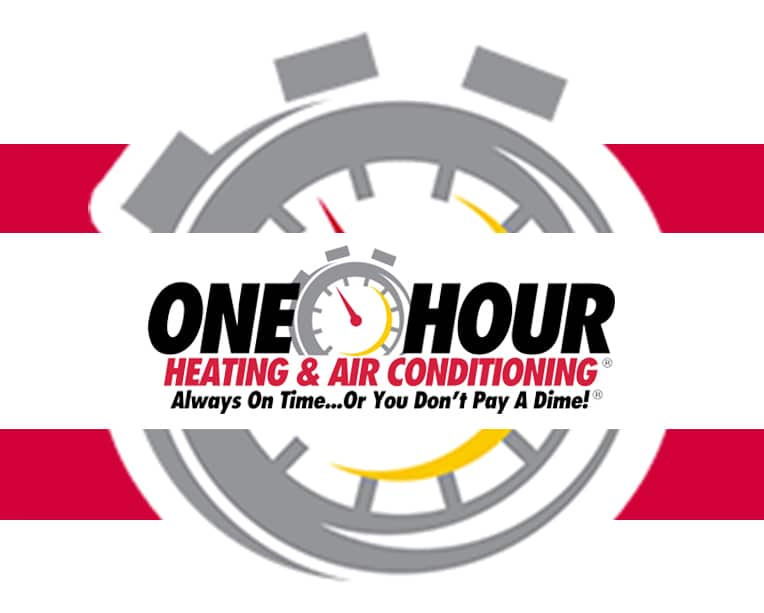Looking to reduce your energy bills and increase your home’s comfort? Understanding and improving HVAC efficiency is key.
Efficient HVAC systems not only save you money but also benefit the environment and enhance your indoor air quality. In this comprehensive guide, we’ll explore everything from the basics of HVAC efficiency to the integration of solar power.
You’ll gain valuable insights into how efficient HVAC systems work, their benefits, and the latest technologies to enhance efficiency. Whether you’re a homeowner in La Mesa, CA, or beyond, this guide will help you make informed decisions for a more comfortable and cost-effective home.
Understanding HVAC Efficiency
What is HVAC Efficiency?
HVAC efficiency refers to how effectively your heating, ventilation, and air conditioning system operates while consuming the least amount of energy.
Efficiency is measured by various ratings such as SEER (Seasonal Energy Efficiency Ratio) for air conditioners and AFUE (Annual Fuel Utilization Efficiency) for furnaces.
A higher rating indicates a more efficient system, meaning lower energy costs and a reduced carbon footprint.
Importance of HVAC Efficiency in Homes
Here are some compelling reasons:
- Cost Savings: Efficient HVAC systems use less energy, resulting in lower utility bills. Over time, the savings on energy costs can offset the initial investment in a high-efficiency unit.
- Environmental Impact: An efficient HVAC system reduces greenhouse gas emissions, contributing to a cleaner, greener environment. This is especially important in areas like Spring Valley, CA, where environmental preservation is a community priority.
- Improved Comfort: Efficient systems provide better temperature control and air quality, enhancing overall comfort in your home. This is crucial during the hot summers and cool winters typical of El Cajon and surrounding areas.
- Longer Lifespan: High-efficiency HVAC units often experience less wear and tear, leading to a longer operational life and fewer repairs.
Investing in an efficient HVAC system is not just about saving money but also about creating a healthier, more comfortable living environment for you and your family. Stay tuned as we explore the role of solar power in enhancing HVAC efficiency in the next section.
The Role of Solar Power in HVAC Systems
How Solar Energy Integrates with HVAC Systems
Integrating solar power with HVAC systems involves using solar panels to harness energy from the sun, which is then converted into electricity to power your heating and cooling units.
This integration can significantly reduce reliance on traditional energy sources, leading to substantial energy savings.
Solar energy systems can be connected directly to your HVAC system or used to offset overall household energy consumption. In sunny locations like La Mesa, CA, solar panels can generate ample energy to meet a significant portion of your home’s HVAC needs. The process typically involves:
- Installation of Solar Panels: Solar panels are installed on your roof or another optimal location to capture sunlight.
- Conversion to Electricity: The captured sunlight is converted into direct current (DC) electricity by the solar panels.
- Inverter Use: An inverter converts the DC electricity into alternating current (AC), which is used by most household appliances, including HVAC systems.
Benefits of Using Solar Power for HVAC
Here are some key benefits:
- Cost Efficiency: Solar power can dramatically reduce or even eliminate your energy bills, depending on the system’s size and your energy consumption.
- Environmental Benefits: Using solar energy reduces your carbon footprint by lowering greenhouse gas emissions, contributing to a more sustainable future.
- Energy Independence: Solar-powered HVAC systems can reduce your dependency on the grid, providing greater energy security and stability.
- Increased Property Value: Homes equipped with solar power systems often have higher property values, making this a wise investment for the future.
The integration of solar power with HVAC systems is a forward-thinking approach that not only saves money but also supports environmental sustainability.
In the next section, we’ll delve into the various benefits of HVAC efficiency to further highlight its importance.
Benefits of HVAC Efficiency
Cost Savings
High-efficiency HVAC units are designed to use less energy to achieve the same or better heating and cooling results compared to standard systems. This means lower monthly utility bills, which can add up to substantial savings over time.
In regions like El Cajon, CA, where temperatures can vary widely, having an efficient system ensures that you stay comfortable without breaking the bank.
Environmental Impact
Investing in an efficient HVAC system can make a notable difference. Efficient systems use less energy, which means fewer fossil fuels are burned to power your home.
This reduction in energy consumption leads to lower greenhouse gas emissions, contributing to a cleaner, healthier environment.
For environmentally-conscious communities in Spring Valley, CA, this is a crucial benefit that aligns with local values of sustainability and environmental responsibility.
Improved System Performance
Do you experience inconsistent temperatures or poor air quality in your home? HVAC efficiency directly impacts the performance of your system.
Efficient HVAC units maintain consistent temperatures and better humidity control, ensuring a more comfortable living environment.
Additionally, these systems often include advanced air filtration capabilities that improve indoor air quality, reducing allergens and pollutants. This is particularly beneficial for households with members who have allergies or respiratory issues.

Technologies to Improve HVAC Efficiency
High-Efficiency HVAC Units
Upgrading to high-efficiency HVAC units is one of the most effective strategies. These units are designed with advanced technology that allows them to operate using less energy while providing superior performance.
For homeowners in La Mesa, CA, this can mean better heating and cooling without the high energy costs. Look for units with high SEER (Seasonal Energy Efficiency Ratio) and AFUE (Annual Fuel Utilization Efficiency) ratings to ensure you get the most efficient system available.
Smart Thermostats
Smart thermostats are a game-changer for HVAC efficiency. These devices allow you to control your HVAC system remotely via your smartphone, tablet, or computer.
You can set schedules, adjust temperatures, and monitor energy usage in real time. Features like learning your schedule and adjusting settings automatically can lead to significant energy savings.
In areas like Spring Valley, CA, where the weather can be unpredictable, a smart thermostat can help you maintain a comfortable home environment efficiently.
Energy Recovery Ventilators (ERVs)
Do you want to improve your home’s air quality while boosting HVAC efficiency? Energy Recovery Ventilators (ERVs) are an excellent solution.
ERVs exchange stale indoor air with fresh outdoor air while transferring heat and moisture between the incoming and outgoing air streams.
This process helps to maintain indoor air quality and temperature without wasting energy. For residents of El Cajon, CA, using an ERV can reduce the load on your HVAC system and enhance overall efficiency.

Solar-Powered HVAC Systems
Solar-powered HVAC systems harness the energy from the sun to provide heating and cooling for your home. There are two primary types of solar HVAC technologies: Photovoltaic (PV) systems and Solar Thermal systems. Both systems offer unique benefits and can significantly reduce your reliance on conventional energy sources.
Photovoltaic (PV) Systems
Photovoltaic (PV) systems use solar panels to convert sunlight into electricity. This electricity can then be used to power your HVAC system and other household appliances.
In sunny regions like La Mesa, CA, PV systems can generate a substantial amount of electricity, reducing your energy bills and carbon footprint. The installation involves:
- Solar Panels: Installed on the roof or other sun-exposed areas.
- Inverter: Converts DC electricity from the panels into AC electricity for home use.
- Electrical Integration: Connects the solar-generated electricity to your home’s electrical system.
Solar Thermal Systems
Solar Thermal systems use sunlight to heat a fluid, which is then used to heat air or water for your HVAC system.
These systems are highly efficient for heating purposes and can be integrated with existing HVAC units to provide supplementary heating. The key components include:
- Solar Collectors: Capture and concentrate solar energy.
- Heat Transfer System: Transfers the heat from the collectors to the HVAC system.
- Storage Tanks: Store the heated fluid for use when needed.
Exploring solar-powered HVAC systems can provide homeowners in Spring Valley, CA, with a sustainable and cost-effective solution for their heating and cooling needs.
Installation of Solar-Powered HVAC Systems
Steps for Installing Solar HVAC Systems
The installation process involves several key steps to ensure optimal performance and efficiency. Here’s a brief overview:
- Site Assessment: A professional evaluates your home’s suitability for solar panels, considering factors like roof orientation, shading, and available space.
- System Design: Based on the assessment, a custom solar HVAC system is designed to meet your energy needs and budget.
- Permits and Approvals: Obtaining the necessary permits and approvals from local authorities, is crucial in areas like La Mesa, CA, where regulations may vary.
- Installation: Solar panels and other components are installed by certified professionals, ensuring compliance with safety and performance standards.
- Connection and Testing: The system is connected to your home’s electrical system and thoroughly tested to ensure everything works efficiently.
Choosing the Right Solar Panels
Efficiency is a key factor; high-efficiency panels generate more electricity per square foot, which is ideal for homes with limited roof space.
Durability is also crucial; look for panels with robust warranties and high durability ratings to withstand local weather conditions.
Cost should be balanced with long-term savings and potential incentives or rebates available in your area. Finally, consider brand reputation; choose panels from reputable manufacturers known for quality and reliability.
Hiring Professional Installers
Professional installers ensure that your solar HVAC system is set up correctly and safely. When searching for installers in La Mesa, CA, or beyond, consider their experience; look for companies with extensive experience in solar installations.
Certifications are essential; ensure the installers have relevant certifications, such as NABCEP (North American Board of Certified Energy Practitioners).
Reviews and references can help gauge the quality of their work; check customer reviews and ask for references.
Maintenance Tips for Solar HVAC Systems
Regular Maintenance Practices
Regular maintenance is key to maximizing the performance and longevity of your system. Scheduling annual inspections with a certified technician to check for any issues with the solar panels, inverters, and HVAC components is essential.
Cleaning the solar panels, especially in areas like La Mesa, CA, ensures they can absorb maximum sunlight. Additionally, checking the system’s wiring and connections for any signs of wear and tear can prevent potential problems before they escalate.
Seasonal Maintenance Tips
Each season brings specific maintenance needs. In the spring, clear any debris from around the panels and HVAC units to allow for proper airflow and sunlight exposure.
Summer heat in Spring Valley, CA, can put a strain on your system, so ensure the panels are clean and the HVAC filters are replaced regularly. In the fall, inspect the panels for any damage caused by summer storms and clean off any fallen leaves.
Winter in El Cajon, CA, might be mild, but it’s still crucial to check for any obstructions that could block sunlight and to ensure that your system is winterized properly to handle cooler temperatures.
Energy Efficiency Ratings and Certifications
Understanding SEER, EER, and HSPF Ratings
SEER (Seasonal Energy Efficiency Ratio), EER (Energy Efficiency Ratio), and HSPF (Heating Seasonal Performance Factor) are critical ratings to understand.
SEER measures cooling efficiency over a typical cooling season, while EER measures it at a specific temperature.
HSPF evaluates the efficiency of heat pumps in heating mode over a heating season. Higher ratings in these categories indicate better efficiency and lower energy costs.
Importance of Energy Star Certification
Energy Star is a government-backed symbol for energy efficiency, providing simple, credible, and unbiased information. Products that earn the Energy Star label meet strict energy efficiency guidelines set by the EPA.
For homeowners in La Mesa, CA, choosing Energy Star-certified HVAC systems ensures reduced energy consumption, lower utility bills, and a smaller carbon footprint, contributing to environmental sustainability.
Choosing the Right HVAC Contractor
Qualities to Look For
Selecting the right contractor is crucial for the installation and maintenance of your HVAC system. Look for contractors with extensive experience and relevant certifications, such as NATE (North American Technician Excellence).
A reputable contractor should have positive customer reviews and be willing to provide references. Additionally, ensure they offer strong warranties and responsive customer support to handle any issues promptly.
Questions to Ask Potential Contractors
Start by inquiring about their experience with solar HVAC systems and high-efficiency units. Ask about the specific brands they recommend and their reasons for those choices.
Discuss the details of their warranties and service agreements, ensuring they provide comprehensive coverage. Finally, request a detailed written estimate that includes all potential costs, helping you avoid unexpected expenses.
Enhance Your Home’s Efficiency Today!
Ready to reduce energy bills and increase comfort? Contact One Hour Heating & Air Conditioning San Diego for top-notch HVAC services in La Mesa, Spring Valley, El Cajon, and surrounding areas.
Our expert team ensures your system is efficient and reliable, providing you with the best in HVAC maintenance and installation.
Don’t wait—improve your home’s HVAC performance and start saving today! Call us now at 619-639-4017 for a consultation and take the first step towards a greener, more comfortable home. Enjoy the benefits of an optimized HVAC system and experience the comfort and savings you deserve.
FAQs
How does solar power improve HVAC efficiency?
Solar power provides a renewable energy source that reduces the reliance on grid electricity, enhancing HVAC efficiency. This leads to lower operational costs and significantly improves overall system efficiency. Utilizing solar energy helps minimize your carbon footprint and energy expenses while boosting HVAC efficiency.
What are the initial costs involved?
The initial costs can vary based on system size and complexity but often include expenses for solar panels, inverters, installation, and necessary permits or approvals. Understanding these costs upfront can help you plan your investment in improving HVAC efficiency. Investing in these components is crucial for maximizing HVAC efficiency.
How long does it take to see a return on investment?
Typically, homeowners can see a return on investment within 5 to 10 years. This depends on energy savings, local incentives, and overall system efficiency, including HVAC efficiency. Investing in solar power offers long-term financial benefits and sustainability while enhancing HVAC efficiency.
Can existing HVAC systems be retrofitted for solar power?
Yes, many existing HVAC systems can be retrofitted to incorporate solar power, which can improve HVAC efficiency. The feasibility depends on your current system’s age and condition. Consulting with a professional can help determine the best retrofit options to enhance HVAC efficiency.
Are there tax incentives for installing solar HVAC systems?
Yes, many regions, including La Mesa, CA, offer tax incentives and rebates to encourage the adoption of solar technology. These incentives significantly reduce the upfront costs. Taking advantage of these incentives can make solar power more affordable and increase the system’s overall cost-effectiveness.



















